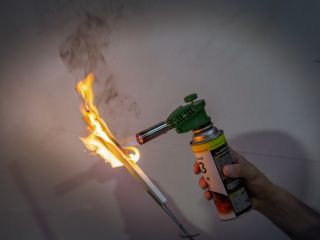
When it comes to home safety, the materials used for your walls and ceilings play a crucial role. But are drywalls fire-resistant? The short answer is yes, but only to an extent. Understanding the difference between fire-resistant and fireproof drywall can help you make informed decisions to safeguard your home from potential fire hazards.
What Makes Drywall Fire Resistant?
Drywalls are primarily made from gypsum, a mineral composed of calcium sulfate, which is sandwiched between two layers of heavy paper. Gypsum has naturally occurring fire-resistant properties due to its water content. When exposed to fire, the water in the gypsum evaporates, slowing down the spread of flames. While this makes drywall fire-resistant, it is important to note that it is not completely fireproof. Standard drywall can delay the spread of fire for up to 30 minutes, which can be a critical window for escaping or containing the fire.
Type X Drywall: A More Fire-Resistant Option
For enhanced fire resistance, Type X drywall, also known as “firecode” drywall, is the best option. This type of drywall is thicker and contains glass fibers mixed with the gypsum, which makes it denser and gives it stronger fire-retardant properties. Type X drywall can resist fire for an additional 30 minutes compared to regular drywall, meaning it can provide up to an hour of protection before the fire begins to spread. However, while this material offers significant benefits in terms of delaying the spread of fire, it is not entirely fireproof.
Where Should You Install Fire-Resistant Drywalls?
Installing fire-resistant drywall throughout your entire home may not be necessary or cost-effective. Instead, it's wise to focus on areas that are more prone to fire hazards. Kitchens, where cooking accidents are common, are prime candidates for Type X drywall. Garages, where flammable materials are often stored, and laundry rooms, where dryers can overheat, are other key locations where installing fire-resistant drywall can make a significant difference in the event of a fire.
Balancing Cost and Safety
While Type X drywall is more expensive than standard drywall, it's an investment that can potentially save lives and property in high-risk areas of your home. If you’re building or remodeling, consider installing fire-resistant drywall in specific rooms rather than covering your entire house. This strategy can help you balance costs while ensuring critical areas have the protection they need.
Additional Fire Safety Measures
Beyond installing fire-resistant drywall, consider other fire-prevention measures like smoke alarms, fire extinguishers, and proper ventilation in fire-prone areas. These elements, combined with fire-retardant drywall, can significantly reduce fire risks in your home.
Call to Action
Protect your home by upgrading to fire-resistant drywall in key areas. At Drywall Repair Hermosa Beach, we offer expert installation of Type X drywall to help keep your family safe. Contact us today for a consultation and see how we can make your home safer from fire hazards.
For more in-depth fire safety guidelines, refer to U.S. Fire Administration.

